Will planting a trillion trees actually solve the climate crisis before we run out of time?
The world is starting to take responsibility for our planet’s current state, says Ben Guarino, but too many issues like deforestation and poverty still need to be addressed before things can truly change
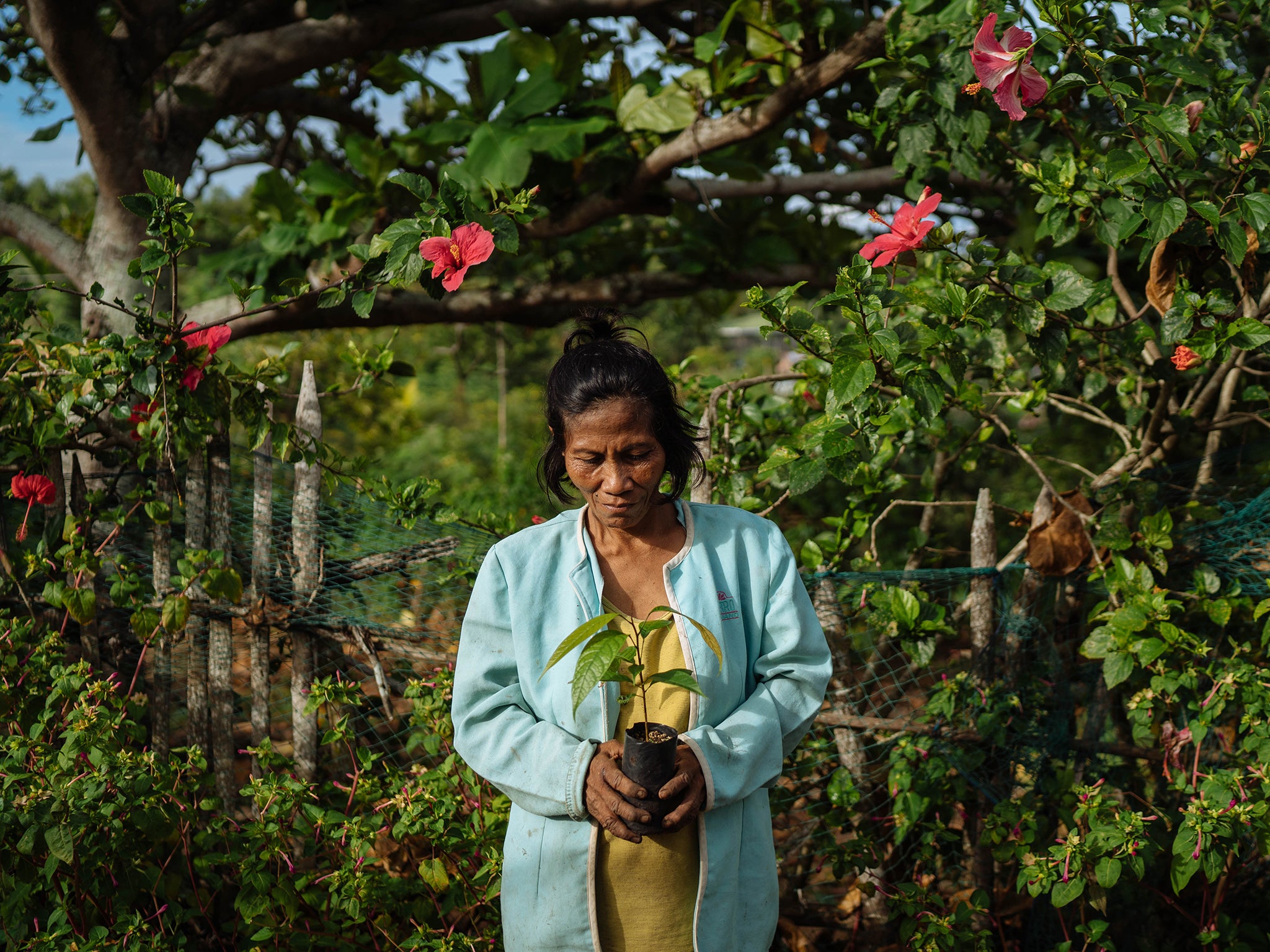
Your support helps us to tell the story
From reproductive rights to climate change to Big Tech, The Independent is on the ground when the story is developing. Whether it's investigating the financials of Elon Musk's pro-Trump PAC or producing our latest documentary, 'The A Word', which shines a light on the American women fighting for reproductive rights, we know how important it is to parse out the facts from the messaging.
At such a critical moment in US history, we need reporters on the ground. Your donation allows us to keep sending journalists to speak to both sides of the story.
The Independent is trusted by Americans across the entire political spectrum. And unlike many other quality news outlets, we choose not to lock Americans out of our reporting and analysis with paywalls. We believe quality journalism should be available to everyone, paid for by those who can afford it.
Your support makes all the difference.At age 9, Felix Finkbeiner planted his first tree. He had just learned about Wangari Maathai, a Kenyan woman who won the Nobel Peace Prize for leading an effort to plant 30 million trees in Africa. The boy was struck by her message – that trees are powerful allies in the fight to curb global warming.
Some of the more sophisticated details went over his head, Finkbeiner recalled. But, he said, he “understood the tree planting part”. So, in 2007, he dug a hole in front of his school near Munich and inserted a crab-apple sapling. “I thought that we kids should be planting some trees, as well,” he says.
Now at 22-years-old, Finkbeiner’s young awakening blossomed into a personal crusade and eventually birthed a tree planting foundation, Plant-for-the-Planet. The organisation, which is responsible for planting millions of trees around the world, is part of a growing constellation of campaigns that seek to reforest every continent except Antarctica.
Driven by the recognition that trees suck Earth-warming carbon out of the atmosphere far more efficiently than any machine, the effort has attracted millions of dollars in support – and inspired hope that trees could become an even more potent weapon in the battle against climate change.
“We’ve been astonished to find that it is up there with all the best climate change solutions,” says ETH Zurich ecologist Thomas Crowther, who is also Finkbeiner’s PhD adviser. Plant-for-the-Planet inherited a massive tree planting program, renamed the Trillion Tree Campaign, from the United Nations in 2011; Crowther is its chief scientific adviser.
At the Davos summit in Switzerland, US president Donald Trump said the United States would join 1t.org, a new project launched by the World Economic Forum to connect the Trillion Tree Campaign and other reforestation programs around the world. “In doing so we will continue to show strong leadership in restoring, growing and better managing our trees and our forests,” said Trump, who last year suggested devastating wildfires in California could have been avoided by raking the forest floors.
Greta Thunberg, the 17-year-old climate activist who was in the audience when Trump spoke, said planting trees is good but no solution to global warming. Thunberg and others say countries and industries must stop emitting carbon and switch to solar, wind and other clean energy. Most environmentalists, including those involved in reforestation, would agree with that sentiment. Still, tree planting offers a simple, accessible, low-tech option with wide appeal.
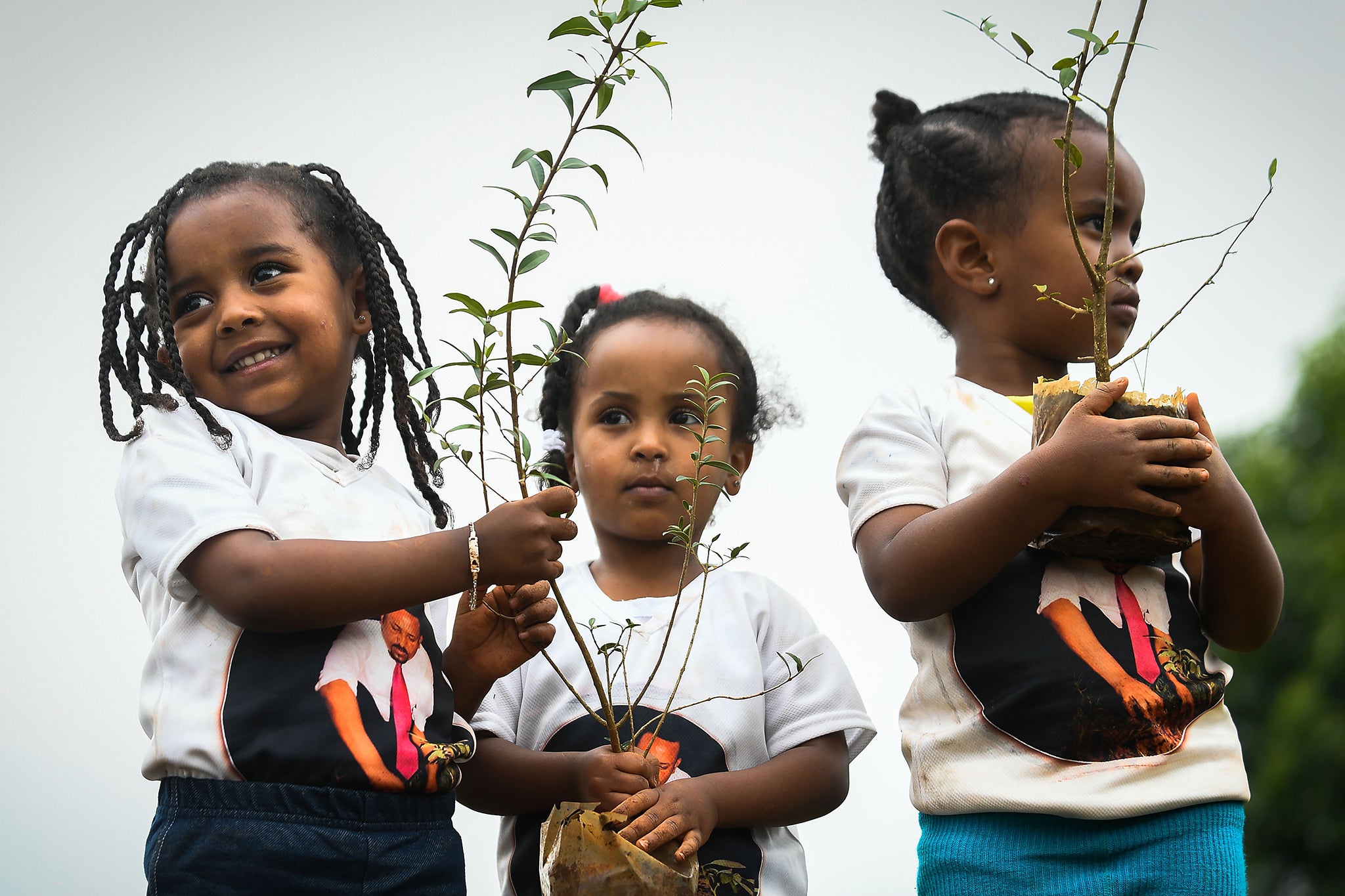
Last October, YouTube broadcaster Jimmy Donaldson, who goes by MrBeast, launched a campaign to raise $20m (£15m) to plant 20 million trees. Billionaire Elon Musk donated $1m (£768,600) and temporarily changed his Twitter handle to “Treelon”. Last July, Ethiopia broke a world record for the most trees planted in a day, when officials said 23 million people planted 350 million trees.
Trees are the most efficient carbon capture machines on the planet. Through photosynthesis, they absorb carbon dioxide, the greenhouse gas that traps heat in the environment, and turn it into energy. That energy creates new leaves, longer stems and more mass – locking away carbon. That makes healthy forests become carbon sinks. American vegetation, according to the US Environmental Protection Agency, absorbed enough carbon dioxide to offset 11 per cent of the nation’s greenhouse gas emissions in 2017.
When it comes to climate change, however, not all trees are created equal. The right species must be planted. They must live to maturity. Location also matters: Trees planted in Germany do not have the same carbon fighting capacity as trees planted in the tropics, where they grow more rapidly and therefore capture more carbon. While new forests in high latitudes can cause Earth’s surface to grow darker and absorb more heat, forests in the tropics are frequently covered by clouds that reflect sunlight and cool the planet.
It is actually very worrying that so many campaigns are set up by organisations that say they want to plant a billion or trillion trees without obviously having any idea about what it takes
But planting trees in the tropics can be hard. In some developing regions trees are often more valuable if they are cut down to be used as fuel or lumber – or to make way for farming. In 2017, 40 football fields of tropical forests were lost every minute, according to Global Forest Watch, a nonprofit that monitors the world’s forests. The reforestation landscape is dotted with small groups, many of which use corporate money given as carbon offsets that are becoming increasingly popular. “This can work, but it can also be misused,” says ecologist Robin Chazdon. She says some corporations pay tree planting groups as a way to “wipe their hands clean” and compensate for their carbon pollution.
Even the Trillion Tree Campaign is not without flaws. Critics have raised questions about the campaign’s reliance on self-reports, causing Plant-for-the-Planet to dial back its numbers by more than a billion trees. In the past year, nearly 1,000 reforestation organisations sought funding from Ecosia, a Berlin-based search engine that uses its profits to sponsor tree planting.
“It is actually very worrying that so many campaigns are set up by organisations that say they want to plant a billion or trillion trees without obviously having any idea about what it takes,” says Pieter van Midwoud, head of Ecosia’s tree planting operations. Plant-for-the-Planet focuses heavily on tropical regions. Latin America, Africa and parts of Southeast Asia, Finkbeiner says, “are the top priorities”.
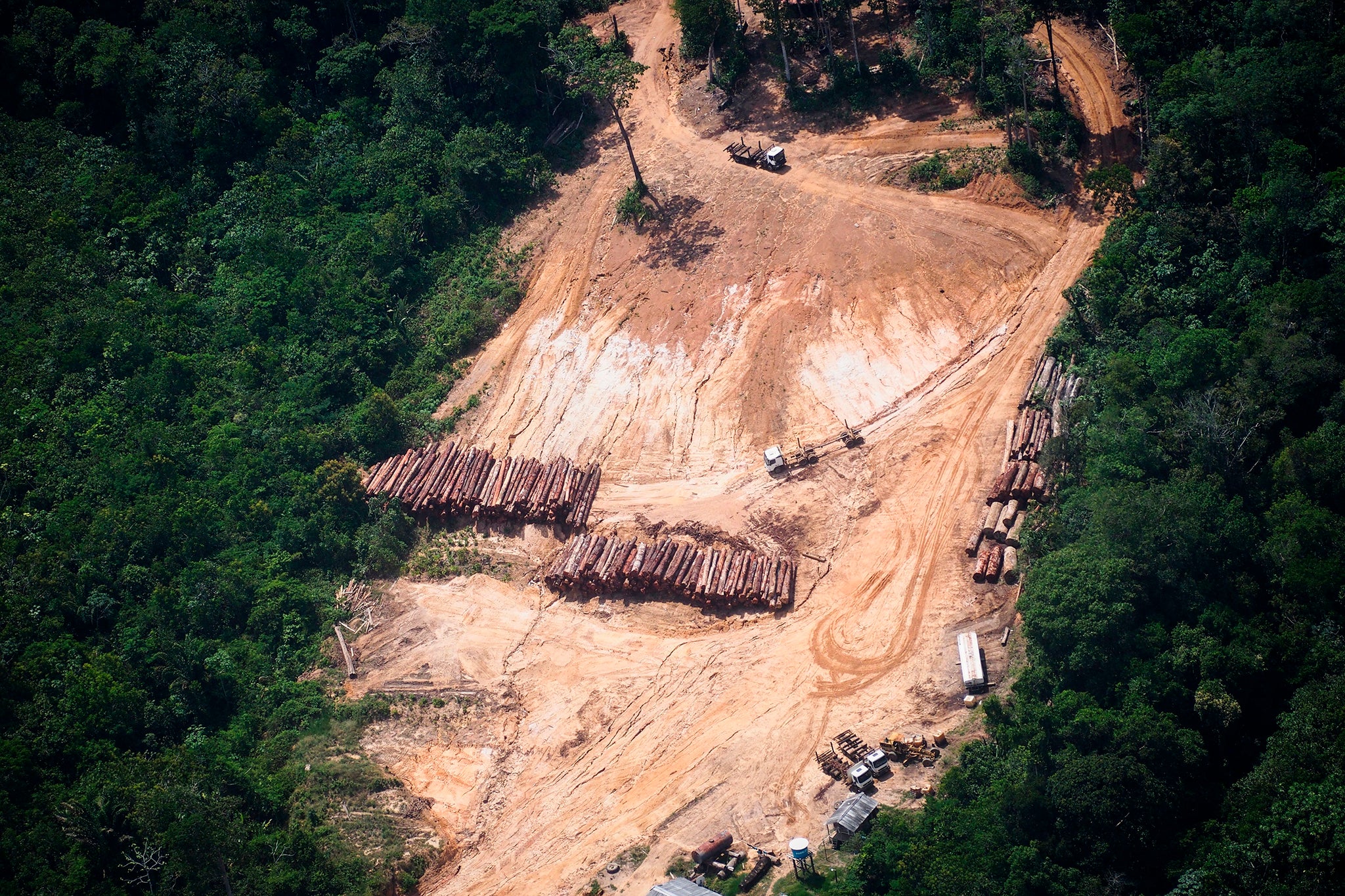
The group is restoring 20,000 hectares – equal to about 50,000 football pitches – of degraded rainforest in Mexico’s Yucatan Peninsula, where it has planted five million trees since 2015 on land owned and protected by Plant-for-the-Planet. The organisation has hired local farmers to tend trees and keep bees.
“We’ve got 100 people there planting, on average, one tree every 15 seconds,” Finkbeiner says. By clearing grass and other fast-growing plants that would choke the young trees, Finkbeiner says, the foundation keeps most of them alive for at least a year, at which point “they’re almost certain to survive”. Each tree is estimated to capture 200kg of carbon dioxide in its lifetime, equal to the amount released when driving a car 500 miles. Because it takes decades for new forests to mature, the most efficient way to use trees to capture carbon is to protect them from being cut down in the first place, environmentalists say.
In a 2014 agreement forged by the United Nations, more than 200 countries and corporations such as McDonald’s pledged to cut deforestation in half by 2020 and to stop it altogether by 2030.
The pace of deforestation has steadily risen since 2000. Logging, agriculture and other human behaviours have driven some plants to extinction and annihilated forests, hobbling nature’s carbon capture machine. Each year between 2014 and 2018, the world lost more than 26 million hectares of trees – a size equivalent to the whole of the UK, according to the UN.
The tension between environmental and economic goals is vividly illustrated in Kawayanon, a village on a small Pacific island that is part of the Philippines.
The potential for replanting in the Philippines is great because it is one of the most deforested countries on the planet. In 1900, tropical rainforests covered more than 70 per cent of the archipelago. By 1990, that tree cover had plummeted to 19 per cent. In 2011, a presidential order created the Philippines National Greening Program with a goal of reforesting 3.7 million acres, an area about the size of 1,900 football pitches. In 2015, the plan was expanded to 5.6 million acres.
On paper, the strategy is simple: Pay poor farmers small sums to plant trees. The new forests would in turn reduce poverty, conserve biodiversity, and provide food and lumber that is sustainably harvested.
A small number of studies indicated that the idea should work. In one experiment, half of 120 Ugandan villages were paid about $28 (£21) per year for every hectare of forest they protected. After two years, 4 per cent of the forest had been lost to clear cutting in the villages that were paid. In the villages that were not paid, more than twice as much forest was lost. Considering the cost of carbon emissions, the benefits of the Uganda program far outweighed the expense, says Northwestern University economist Seema Jayachandran, the study’s author. “If you can get people to do it, it is a net win for carbon sequestration,” she says.
The best plans provide long-term motivations to keep forests alive. Otherwise, after payments stop, locals may abandon the young trees before they mature. Or poor residents turn to the trees for cooking fuel. Some forests have even been destroyed so planters can be paid again to plant.
Before there were illegal cuttings, the trees were large and big and beautiful. The new trees will return yellow grassland back to forest
Over two decades, Kawayanon tried and failed four times to regrow its forest. Finally, forestry officials decided to try something new.
“There is a saying in forestry: It is not about trees; it is about people,” says Nestor Gregorio, a research fellow at Australia’s University of the Sunshine Coast who studies low-cost forestry techniques. “If people will find trees important, then they will look after the trees.” Gregorio worked with a colleague, forestry expert John Herbohn, and several others to help the villagers see the trees as a source of future livelihood rather than an immediate resource. Fruit trees provide an ongoing supply of food. Some groves will be harvested for lumber and replanted, in keeping with sustainable practice. Stands of native trees left to grow replenish the watershed and prevent erosion, Gregorio’s research has shown.
The scientists taught the farmers to identify the full and tall specimens that produce the hardiest seedlings, nicknamed “mother trees”, and showed them how to transfer seedlings to recovery chambers, which rejuvenate them after the trauma of collection. During planting season, they taught the farmers to dig large holes in the soil, a foot on each side, to better trap moisture. Gregorio and Herbohn are spreading these lessons to other villages in the Philippines and in Papua New Guinea.
Two dozen members of the Kawayanon Farmers Association now run a tree nursery. Benefits from the trees supplement the $600 (£461) a year they earn from farming – below the living wage in the Philippines. Each day, they tend little seedlings; during planting season, they carry them up the side of a volcanic mountain. The farmers, many in their fifties and sixties, barely break a sweat in the 80-degree weather.
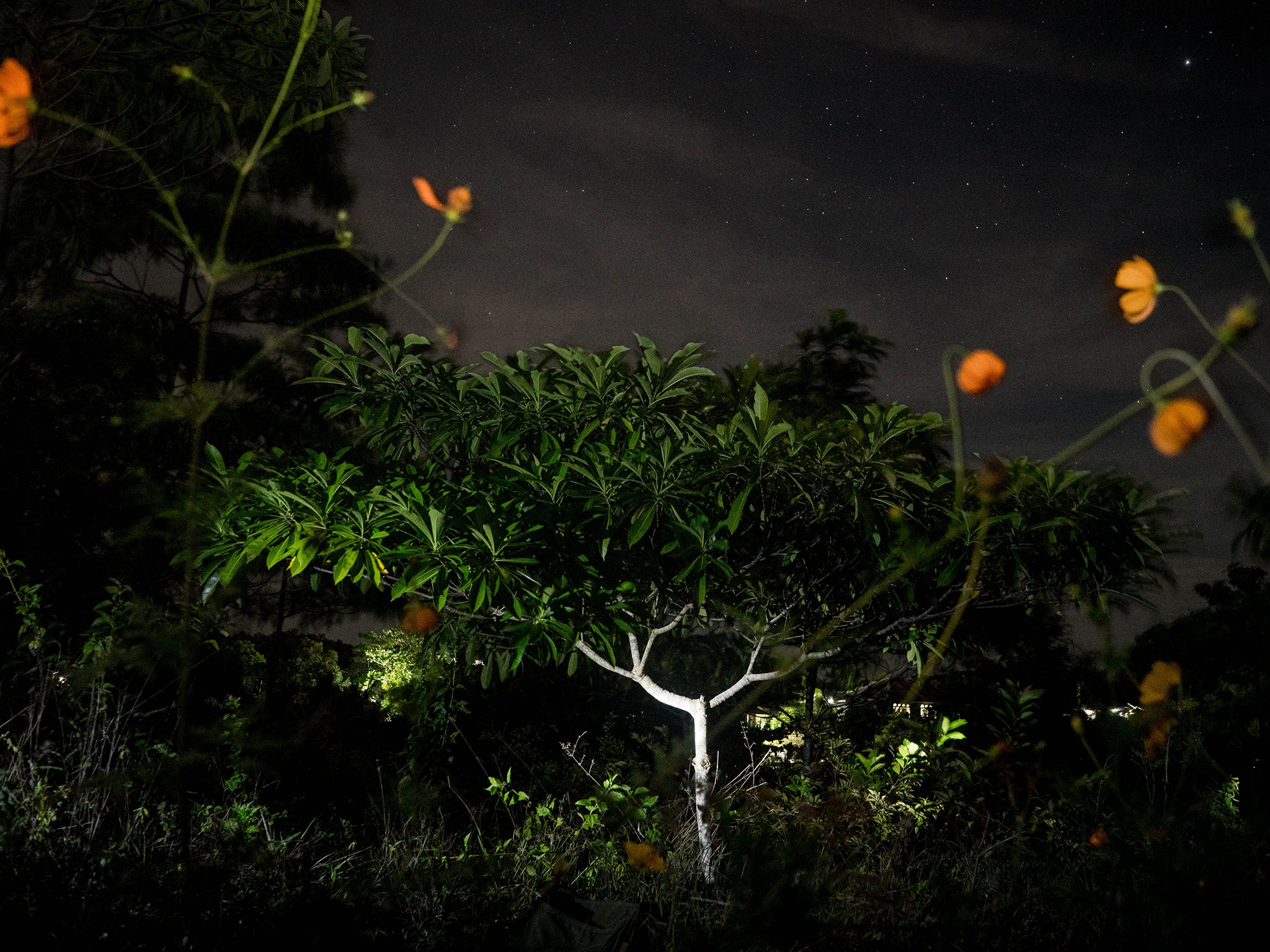
At first glance, the greenery looks like any healthy forest. Ferns curl at the base of the trees. Only upon closer inspection is it apparent that the trees are spaced in neat, unnatural rows. “Before there were illegal cuttings, the trees were large and big and beautiful,” says Annabelle Hayahay, a leader in the Kawayanon group. The new trees, she says, will return yellow grassland “back to forest”.
Now five-years-old, Kawayanon’s 45-acre forest is a model for the National Greening Program. Nationwide, the program planted more than a billion seedlings between 2011 and 2018. The tree cover in the Philippines has begun to return – increasing to about 23 per cent, according to a UN Food and Agriculture Organisation report in 2015. Still, the Philippine forests and the greening program are threatened by politics and illegal logging.
Danilo Lendio, who oversees the Department of Environment and Natural Resources (DENR) station in Cebu province, says his office has broken up the same tree-harvesting ring three times. The first time, the man in charge of the ring was a lieutenant in the army, Lendio says. The second time, he had been promoted to captain. By the third round, the ringleader was a general, and the DENR was warned it would be too risky to continue to bust him. Lendio says he will persist. “As long as he’s doing what he is, we will continue,” he says.
Meanwhile, President Rodrigo Duterte’s administration cut the greening program’s budget in half last year, citing poor performance. Administration officials declined to comment on the decision. Though the Philippines produces less than 1 per cent of the world’s greenhouse gas emissions, it is a nation on the edge of climate change, which underscores its need to restore its rainforests.
Global warming has probably strengthened the storms that pummel its shores. In November 2013, Typhoon Haiyan battered the country’s low-lying eastern islands with a wall of water. The hurricane’s winds, which reached up to 180mph, were some of the fastest ever recorded. More than 6,300 people died. Had the mangrove forests been healthier, they may have absorbed some of Haiyan’s winds and surges. A lush mangrove forest was credited with saving the seaside town named General MacArthur.
If such problems could be overcome, how much carbon could trees capture? Jean-Francois Bastin, an ecologist and geographer at the Swiss Federal Institute of Technology, has spent the past decade trying to answer that question.
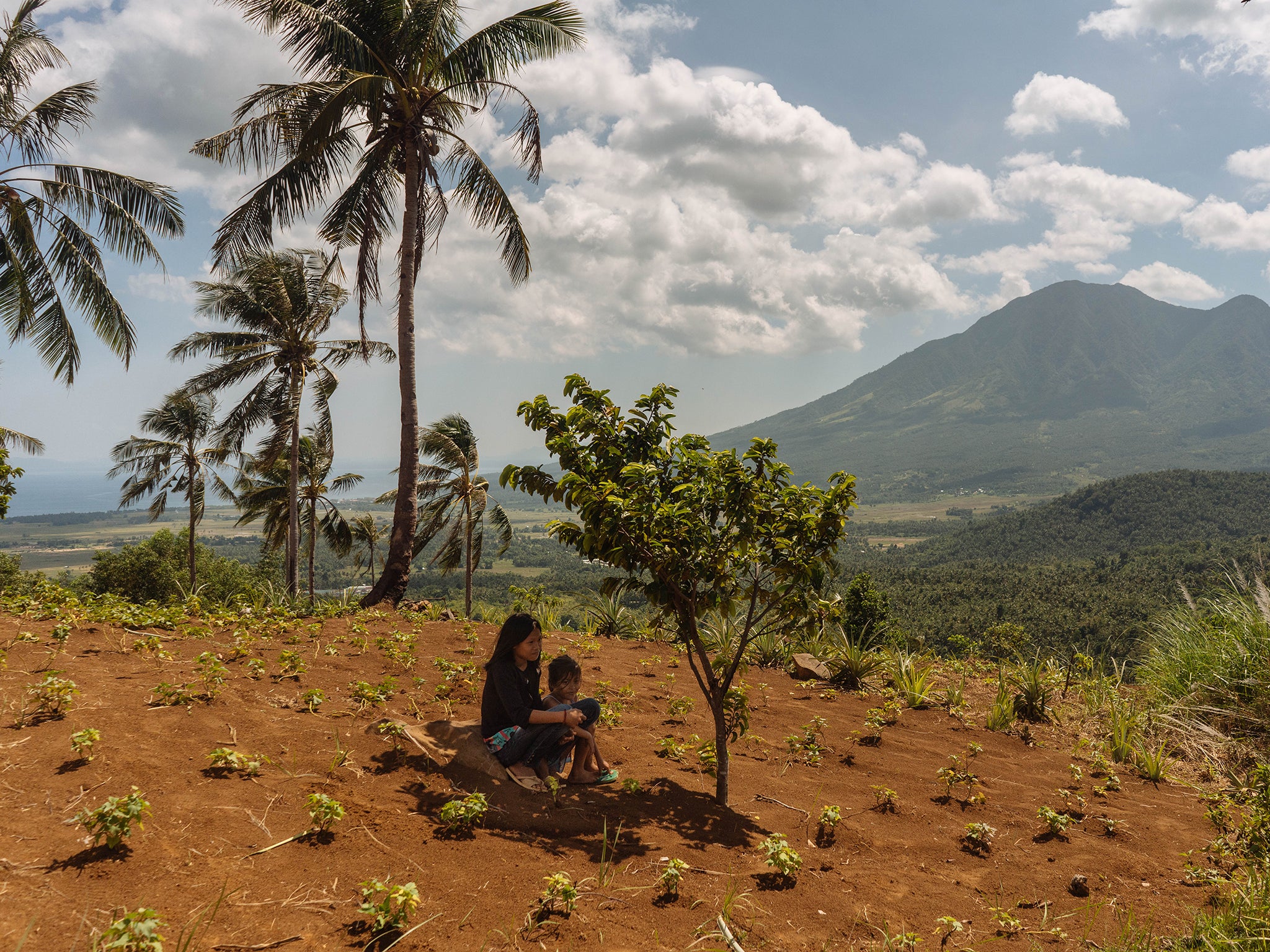
Several years ago, Finkbeiner wanted to know how many trees currently exist, a question that inspired Bastin, Crowther and others to map global tree density. In a study published in the journal Science in 2015, they estimated that there are about three trillion trees on the planet. A follow-up in 2019 found room, theoretically, for about a trillion more.
Using Google Earth satellite images, Bastin, Crowther and their colleagues examined 80,000 half-hectare plots in protected areas worldwide, noting where trees should be abundant, such as rainforests, and where they don’t grow, such as grasslands. Using this knowledge, they calculated the total theoretical canopy cover in today’s climate if the planet were scrubbed of human existence.
When the needs of people were added back into the equation, the researchers calculated that an additional 0.9 billion hectares could be covered with trees, an area the size of the US. When fully grown – which would take hundreds of years of effort – this forest would suck more than 200 gigatons of carbon out of the atmosphere, or 25 per cent of the carbon in the atmosphere, the scientists calculated.
The study found that six countries hold more than half the potential to restore trees – the US, Russia, Brazil, Canada, Australia and China – because they have the most land available to plant.
Few scientists dispute that trees are useful. But “there are some concerns about some of the messages in the Bastin-Crowther paper,” Chazdon says, meaning the researchers didn’t fully address the real-life barriers to reforestation.
Other critics say the math was off. The journal Science has published six critiques: Some say the model overestimates the ability of forests to capture carbon because it ignores carbon trapped in soil. Another group of researchers note that, in northern regions, transforming reflective snow into green leaves would be counterproductive.
The lab stands by its calculations, but Crowther acknowledges that trees should not be planted everywhere the model suggests they can grow. Nor are trees a panacea for fighting climate change, he says: “Cuts to emissions” by ending humanity’s dependence on fossil fuels “are the central part” of the battle. Still, Crowther says, planting trees is “one of thousands of solutions that are absolutely critical”.
© Washington Post
Join our commenting forum
Join thought-provoking conversations, follow other Independent readers and see their replies
Comments